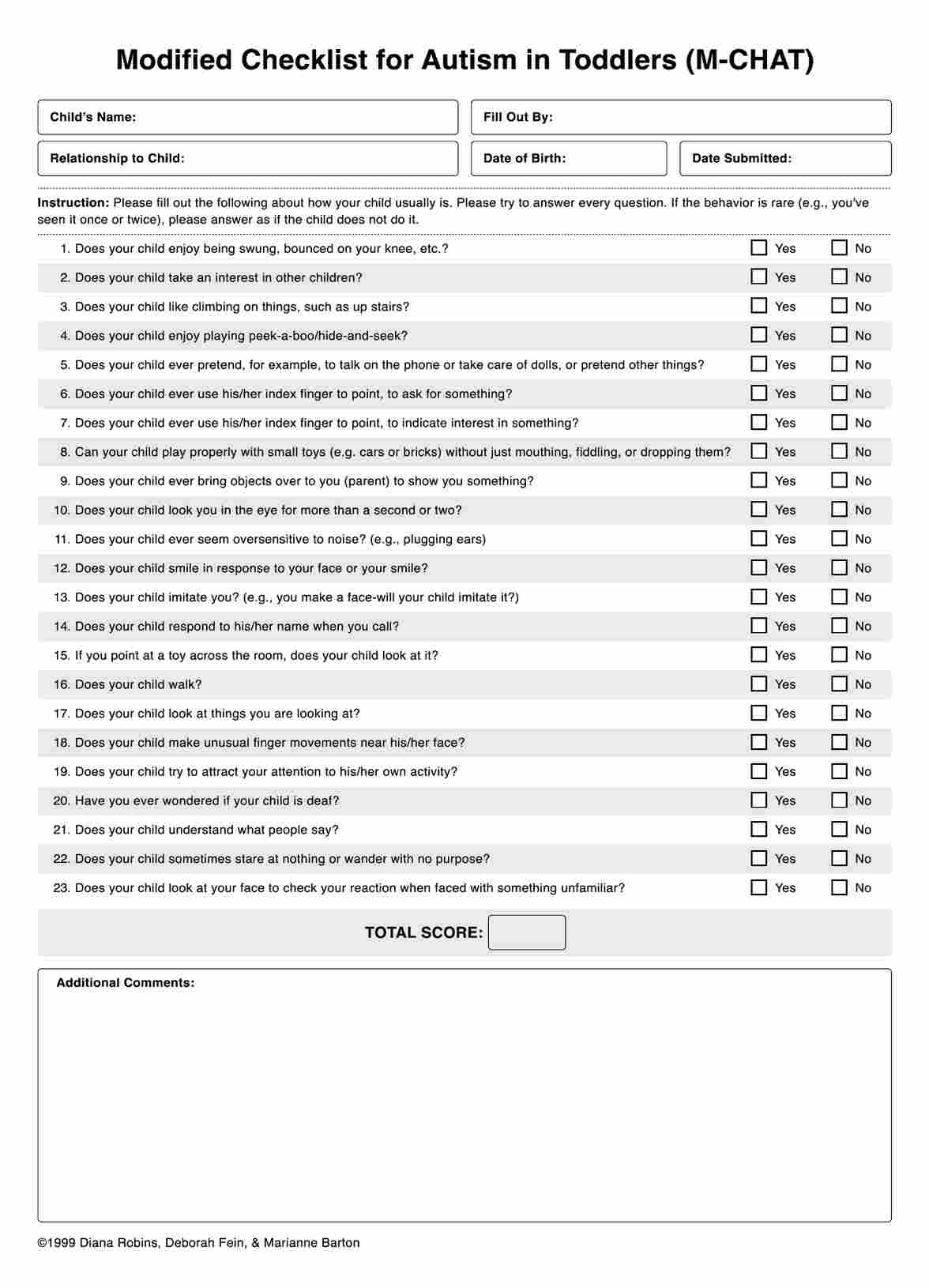No. This is a screening tool, not a diagnostic tool. You are allowed to use this in order to determine if the child should be referred for a diagnostic examination.

Modified Checklist for Autism in Toddlers (M-CHAT)
Use the Modified Checklist for Autism in Toddlers (M-CHAT) to see if a child is showing signs of ASD.
Modified Checklist for Autism in Toddlers (M-CHAT) Template
Commonly asked questions
It depends on the score range. If they are in the Moderate Risk range, then parents need to answer the follow-up version of this checklist before the professional decides on what to do. If they are in the High Risk range, then the follow-up will be bypassed and they will be referred for a diagnostic examination. If you are a healthcare professional, try to comfort the parents and tell them that it's good that they are having their toddler checked early so that a care plan can be developed, and the plan will help them deal with and manage the ASD well enough that it does not negatively impact the child and the parents.
Nope. This only screens kids for possible ASD. ASD may come alongside other developmental issues but other types of assessments are needed to screen for those. Again, it's better to conduct a comprehensive examination that allows you to rule out other disorders.
EHR and practice management software
Get started for free
*No credit card required
Free
$0/usd
Unlimited clients
Telehealth
1GB of storage
Client portal text
Automated billing and online payments











